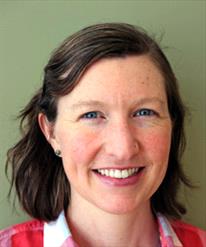

Digital art by Tamara Rees
Source: Adobe Stock/freshidea
For 10 years, borrowers of federal student loans who work or aspire to work for government or nonprofits have wondered whether Uncle Sam would honor an offer to forgive their loans.
If they had the right employers, organized their loans just so, filled out the paperwork correctly and paid on time for 120 months as required, would the U.S. government really erase their balances?
The answer, at last, could be revealed at any moment.
This fall marks the first time a borrower could have fulfilled the requirements of Public Service Loan Forgiveness (PSLF), a program established under the College Cost Reduction and Access Act of 2007 and rolled out on Oct. 1 of that year.
Borrowers are watching with keen interest for the first person to receive forgiveness, to see that the promise isn't a figment.
"I kind of feel like we're looking for a unicorn," said Dr. Ariella Samson, who graduated from veterinary school in May with $187,000 in student debt. Samson hopes forgiveness will enable her to afford a career working in animal shelters.
Whether any borrowers formally have applied for forgiveness to date is unclear; the U.S. Department of Education did not answer questions from the VIN News Service on the program status.
Adding to the suspense around PSLF, President Donald Trump is proposing in his 2018 budget to eliminate the program, effective July 1.
The Trump proposal doesn't affect loans taken out before that date, suggesting that borrowers on track to receive loan forgiveness will not be derailed by the program's future elimination. In these days of volatile national politics, though, some borrowers aren't so sure.
"At the rate the current administration is disassembling everything, my hope [is] squashed," said Dr. Paulynne Bellen, who entered veterinary school in 2013 and simultaneously pursued a master's in public health to position herself for a career in government, hoping to earn loan forgiveness along the way.
While Trump's penchant for upheaval has amplified anxieties about the program, doubts about the promise of forgiveness have brewed for years.
In an Aug. 24, 2011, blog post, Heather Jarvis, a lawyer and student-loan expert, wrote: "I've been hearing from a lot of worried borrowers wondering, 'Can I count on Public Service Loan Forgiveness to last?' My answer? Um, maybe. Probably. I think so."
Jarvis explained: "It would take an act of Congress to take away Public Service Loan Forgiveness ... Have you noticed lately how hard it is to get Congress to act?"
Lawmakers supporting the program have formed a Public Service Loan Forgiveness Caucus to champion the cause. According to the office of Rep. Ryan Costello, a Republican, who founded the caucus with Rep. Brendan Boyle, a Democrat, both from Pennsylvania, the caucus currently has 20 members from both parties. "Caucus members are working to educate all members of Congress about the benefits of the PSLF program to their constituents, who work in a wide variety of industries, including health care, education, law enforcement, the military and certain charitable organizations," Costello's office said by email.
The American Veterinary Medical Association also is part of a coalition of organizations working to preserve the program. It's collecting stories from veterinarians pursuing PSLF for its lobbying efforts, and is rallying members to send expressions of support for PSLF to Congress.
The U.S. Department of Education states upfront that it can offer no assurances about the program's future. In answer to the question, "Can I be certain that the PSLF Program will exist by the time I have made my 120 qualifying payments?" it replies, "We can't make any guarantees about the future availability of PSLF. The PSLF Program was created by Congress, and Congress could change or end the PSLF Program."
USDE actions have stoked doubts, as well. The department offers a form by which borrowers may certify that they work for a "qualifying employer." Those forms are handled by FedLoan Servicing, a contractor overseeing PSLF. FedLoan is mired in criticism and legal problems related to its handling of loans belonging to borrowers pursuing PSLF.
In a court filing in a separate lawsuit, USDE maintains that the employment certifications provide "provisional guidance" that do "not represent a final decision." In other words, the most borrowers pursuing PSLF can obtain through the forms is a probable thumbs-up, but nothing certain.
Not until borrowers believe they have fulfilled the criteria for earning forgiveness do they submit an application to the department for a definitive determination. USDE approval of the first application is the unicorn for which PSLF aspirants are searching.
How many borrowers?
No one knows exactly how many borrowers are in line for forgiveness. As of June 30, 669,426 individuals had submitted at least one employment certification form. However, not everyone who's ever submitted a form is continuing to pursue PSLF. Also, anyone pursuing PSLF, while encouraged to submit the form, isn't obligated to do so before applying for forgiveness.
A much smaller number appears to be close to achieving forgiveness. The AVMA Governmental Relations Division, citing information from the National Association of Student Financial Aid Administrators, said 139 borrowers who have submitted approved employment certification forms had, as of June 30, made 97 or more payments, bringing them within two years of qualifying.
Dr. Alondra Velez is an example of a borrower who pursued PSLF at one time, but is no longer. After graduating with her DVM in 2007, Velez worked for three years at a humane society in Arizona. Over time, the stress of the job — which included doing what felt to her like far too many euthanasias — led her to quit.
She thought about continuing public service as a teacher, and applied for a position at a veterinary school, but wasn't hired. "Bottom line, there are not that many options," Velez said. "Positions [in public service] are limited, salaries are too poor to justify the undesirable work you have to do to qualify for this, and then ... you don't know whether you will get it after all."
Now Velez works in private practice, picking up as many extra shifts as she can to cover her loan payments. Her balance of federal and private loans is about $130,000.
Dr. Lena DeTar has had a more rewarding experience in public service. One year out of veterinary school, DeTar began working in animal shelters, first in Utah, then Arizona, then Oregon. A year ago, she landed a faculty job at Cornell University College of Veterinary Medicine, where she is an assistant clinical professor. She's made about half of the 120 qualifying payments needed for forgiveness.
DeTar had been planning for a while to avail herself of PSLF, but it wasn't until last November — election night, to be precise — that she was motivated to submit the certification paperwork. Seeing the news that Trump would be president, DeTar's first thought was, "I'd better get this PSLF going." Her hope is that future changes to the program won't affect borrowers who have previously documented their intention to participate.

Photo courtesy of Dr. Lena DeTar
Pursuing a career in shelter medicine and teaching, Dr. Lena DeTar is halfway toward reaching the promise of Public Service Loan Forgiveness.
DeTar's $225,000 debt from veterinary school is slightly smaller than her mortgage but seems bigger because "there are two of us paying that [house] off, and only one of me paying this [student debt] off — or trying not to pay it off," she said wryly.
Borrowers aiming for PSLF are required to use one of several repayment schemes known as income-driven repayment (IDR), whereby their monthly payments are pegged to their income. While that makes repayment more affordable month-to-month, many borrowers aren't paying enough to reduce their loan principal. Consequently, their balances are rising.
DeTar said her loan balance was about $185,000 when she graduated, which means it's grown $65,000 since then.
"There's no benefit to me to try to pay things down, because it's the number of payments I make that counts [for PSLF], not how much I pay," she explained, " — unless this program doesn't work out, in which case, my strategy has to change completely."
DeTar doesn't have a detailed Plan B, but figures that if the PSLF option disappears, she'll just continue paying as she does now. IDR plans provide for forgiveness of remaining balances after 20 to 25 years.
One important difference about IDR plans versus PSLF, besides a longer repayment period, is that forgiven amounts are considered taxable income. In other words, someone with a sizable forgiven sum under IDR is likely to be hit with a sizable tax bill.
"I am trying to save as much as I can in case the PSLF thing doesn't work out and I have to try to pay the loan down," DeTar said.
At the same time, she tries not to fret over the ifs, ands and buts of her student debt. "It is somewhat of a thing that hangs over my head but I also don't really care that it's there," she said. "As long as I know that somehow, some way, it's not going to be there any more in, like, 30 years, it's kind of OK. It's not like credit-card debt where it never goes away."
Uncertainty over PSLF also doesn't cause her to regret her career path. "I love shelter medicine," DeTar said. "I want to share the love with the students that I get to teach on a daily basis now."
'They in no way make it easy'

Photo by Jeff Samson
Upon graduating in May, Dr. Ariella Samson dove into her loan paperwork, hoping to get on the road to loan forgiveness as quickly as possible.
Samson, another shelter-medicine veterinarian seeking loan forgiveness, is much earlier on her repayment path. She anticipates making her first qualified payment in November.
Samson gladly would have begun paying upon graduating in mid-May, but loan bureaucracy slowed the process. First, she had to wait for her school to generate a letter to her loan providers stating that she'd graduated. Then in June, she was cleared to consolidate the loans she'd amassed during her school years.
"I'm a pretty anal person, and I kept on that stuff daily for weeks," Samson recounted. "When is it time? When can I do this? When is it time?"
The consolidated loan ended up being picked up by Great Lakes, one of 10 servicers of federal educational loans. Next, Samson applied for IBR, which was approved in July.
"I then needed to start the process of applying for PSLF," Samson continued. "Once I got approved for that, everything stopped. Your loans get transferred to FedLoan [the servicer for all loans bound for PSLF]. My loans officially went to FedLoan a couple of weeks ago — this is probably late September. They were then put into forbearance for a few weeks while they do what they need to do."
Last Samson heard, the servicer expected to produce her first bill on Nov. 2.
"It's potentially four months that I could have been making those payments, while they moved me through three different carriers!" Samson fumed. "So even if you want to do this process, they in no way make it easy."
While she waits, not only is Samson unable to make progress toward PSLF, she's watching interest mount, pushing up that loan balance.
"I'm one of those people who worries about money and the future," she said. If PSLF goes away, she said, "I'm screwed."
She's done the math. Forgiveness through IBR rather than PSLF could result in an income tax hit of some $85,000.
"If it was just me and no husband with a good salary in the picture, I'd probably have to get out of shelter medicine," Samson said, noting that she earns $10,000 to $17,000 less per year in her nonprofit shelter job than most of her friends working in private practice.
She doesn't begrudge the difference because she loves the field. "Animals that have no one else to take care of them ... I am their voice," she said. "Most days, even if it was a horrible day, I feel like I did some good."
She believes that physicians, teachers and other professionals working in low-income communities or in unglamorous government jobs are motivated by the same passion, and argues that people whose work contributes to the well-being of the community deserve support like PSLF.
"You get rid of that, and you are going to end up with people who are kind-hearted and do this work who end up getting screwed by their student debt," Samson said. "We are all coming out [of school] with absurd amounts of debt and we're not going to make it back in our lifetime."
To boost her income, Samson works two part-time jobs — one at a high-volume spay-neuter clinic, the other at a vaccine clinic. "There are many weeks that I'm working seven days a week, which is rough," she said. "I have a house that I have a mortgage on, and bills. If in the future this [PSLF] program goes away, I don't know that I'll be able to stay in shelter medicine. Or I'll have to keep working other jobs like I'm doing now."
'A loan on my tombstone'

Photo courtesy of Dr. Paulynne Bellen
Unwilling to let worry about student debt suppress her zest for life, Dr. Paulynne Bellen has accepted the prospect of making payments
ad infinitum.Dr. Paulynne Bellen had 10 years of experience in corporate human resources before she began veterinary school. She was acutely aware of the expense of switching careers. Accepted into eight programs, Bellen chose the one that would cost the least. She wrote a batch of scholarship-winning essays. Even still, she graduated this spring $236,000 in the hole. Bellen estimates the hole will deepen by another $20,000 by the time she completes a master's degree in public health next summer.
Her plan from the start was to earn loan forgiveness by working in public health. Then Trump took office, and Bellen's outlook changed. She sat down with a financial adviser and said, "Disregard the forgiveness plan, assume I'm not going to get it. How much will I have to pay?" Her plan now is to make payments through an IDR plan while setting aside $500 a month to cover taxes on any eventual forgiven balance.
Bellen's made peace with her new plan, deploying gallows humor for comfort. "If it doesn't happen, bottom line is, I'm going to die with a loan on my tombstone," she guffawed. "I thought about this: If I were to have a family — a husband and kid down the line — what if I get hit by a bus and die? They said [the debt] dies with me. I said, 'Good enough.' As long as this doesn't get transferred to my family, I am OK with it. I would like to enjoy my life and not let my loans hamper it."
For now, she has more urgent business to tend: working as an associate in a small-animal clinic, picking up extra hours staffing a mobile vaccine clinic, and finishing her master's at the Ohio State University. Whether she will parlay that master's into a job in the public sector, she doesn't know anymore.
"Either way," Bellen said cheerfully, "I am very happy working as a vet and do not regret my decision to change careers!"